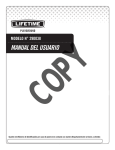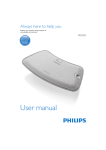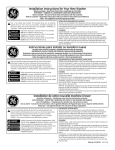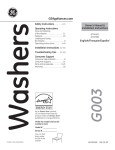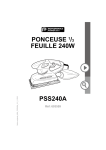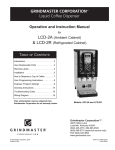Download North Hybrid Soft Pak Energy-Absorbing Lanyards
Transcript
North Hybrid Soft Pak
Energy-Absorbing Lanyards
INSTRUCTION MANUAL
North Hybrid Soft Pak
Longes avec absorbeur d'énergie
MANUEL D'INSTRUCTION
North Hybrid Soft Pak
Eslingas con absorbente de energía
MANUAL DE INSTRUCCIONES
I340 Rev. A / MFP9720214
July 2014
Table of Contents
3URGXFW3XUSRVHDQG6SHFL¿FDWLRQV
*HQHUDO)DOO3URWHFWLRQ5HTXLUHPHQWV:DUQLQJVDQG/LPLWDWLRQV
6\VWHP&RPSDWLELOLW\
3HUVRQDO)DOO$UUHVW6\VWHP&RPSRQHQW5HTXLUHPHQWV
8VH
6KRFN$EVRUELQJ/DQ\DUGV
&DOFXODWLQJ)DOO&OHDUDQFH'LVWDQFH
,QVSHFWLRQDQG0DLQWHQDQFH
/DQ\DUG,QVSHFWLRQ7\SHVRI0DWHULDO'DPDJH&OHDQLQJDQG6WRUDJH
/LIH([SHFWDQF\RI1RUWK%UDQG/DQ\DUGV
3URGXFW/DEHOV
,QVSHFWLRQDQG0DLQWHQDQFH/RJ
1RWHV
Table des Matières
)LQDOLWpGXSURGXLWHWVSpFL¿FDWLRQV
([LJHQFHVJpQpUDOHVDYHUWLVVHPHQWVHWOLPLWDWLRQVFRQFHUQDQWOD
protection antichute............................................................................. 11
&RPSDWLELOLWpGHVV\VWqPHV
8WLOLVDWLRQ
&DOFXOGHODGLVWDQFHGHOD]RQHGHGpJDJHPHQWHQFDVGHFKXWH
,QVSHFWLRQHWHQWUHWLHQ
eWLTXHWWHVGHVSURGXLWV
5HJLVWUH'
LQVSHFWLRQHW'
HQWUHWLHQ
5HPDUTXHV
Índice
3URSyVLWR\HVSHFL¿FDFLRQHVGHOSURGXFWR
2.0 Requisitos, advertencias y limitaciones generales de la protección
FRQWUDFDtGDV
&RPSDWLELOLGDGGHOVLVWHPD
8VR
&iOFXORGHODGLVWDQFLDGHVHJXULGDG
,QVSHFFLyQ\PDQWHQLPLHQWR
(WLTXHWDVGHORVSURGXFWRV
5HJLVWURGHLQVSHFFLyQ\PDQWHQLPLHQWR
1RWDV
2
U s e r In s tru c ti o n s - E n g l i s h
Thank You
Thank you for your purchase of North fall protection equipment manufactured by Honeywell
Safety Products.
!
WARNING
All persons using this equipment must read, understand and follow all
instructions. Failure to do so may result in serious injury or death. Do
not use this equipment unless you are properly trained.
Questions?
CALL
,WLVFUXFLDOWKDWWKHDXWKRUL]HGSHUVRQXVHURIWKLVHTXLSPHQWUHDGDQGXQGHUVWDQGWKHVHLQVWUXF
tions. In addition, federal law requires employers to ensure that all users are trained in the
proper installation, use, inspection, and maintenance of fall protection equipment. Fall protection
training should be an integral part of a comprehensive safety program.
Proper use of fall arrest systems can save lives and reduce the potential of serious injuries from
DIDOO7KHXVHUPXVWEHDZDUHWKDWIRUFHVH[SHULHQFHGGXULQJWKHDUUHVWRIDIDOORUSURORQJHG
suspension may cause bodily injury. Consult a physician if there is any question about the
user’s ability to use this product. Pregnant women and minor children must not use this product.
3URGXFW3XUSRVHDQG6SHFLÀFDWLRQV
North Hybrid Soft Pak Energy-Absorbing Lanyards are connecting devices to be used as
the integral link between a full-body harness and anchorage/anchorage connector within
a personal fall arrest system.
Model No.
NHL-6FTSLS
NHL-6FTSLR
NHL-4FTSLS
NHL-4FTSLR
NHL-6FTDLR
# of Legs
Length
Harness
Connection
Anchorage
Connection
Material
One
6 ft. (1.8m)
Steel Snap Hook
Steel Snap
Hook
Orange Polyester
Webbing
One
6 ft. (1.8m)
Steel Snap Hook
Steel Rebar
Hook
Orange Polyester
Webbing
One
4 ft. (1.2m)
Steel Snap Hook
Steel Snap
Hook
Orange Polyester
Webbing
One
4 ft. (1.2m)
Steel Snap Hook
Steel Rebar
Hook
Orange Polyester
Webbing
Two
6 ft. (1.8m)
Steel Snap Hook
Steel Rebar
Hooks
Orange Polyester
Webbing
U s e r In s tru c ti o n s - E n g l i s h
7KH+\EULG6RIW3DN(QHUJ\$EVRUEHUPHHWV&6$=&ODVV(DQG(WRPHHWERWKXVHU
QHHGVRQWKHMREVLWHDQGHQVXUHFRPSOHWHFRPSOLDQFH3HUIRUPDQFHVSHFL¿FDWLRQVEDVHGRQ
ambient dry conditioning drop test) are shown in the table below:
Standards
CSA Z259.11 Class E4
CSA Z259.11 Class E6
Maximum
Allowable
Free Fall
Minimum Maximum
Capacity Capacity
Maximum Average
Arrest
Arrest
Force
Force
Maximum
Elongation
6 ft. (1.8m)
100 lbs.
(45 kg)
254 lbs.
(115kg)
900 lbs.
(4kN)
550 lbs.
(2.45kN)*
47.2 in.
(1.2m)**
6 ft. (1.8m)
200 lbs.
(90 kg)
386 lbs.
(175kg)
1300 lbs.
(6kN)
715 lbs.
(3.18kN)*
69.9 in.
(1.75m)**
*Average arrest force may vary by E4/E6 energy absorbers. Refer to product label.
**When statically tested to 3600 lbf (12kN), maximum elongation is 70.9 in. (1.8m).
2.0 General Fall Protection
Requirements, Warnings & Limitations
7KHDXWKRUL]HGSHUVRQXVHUVKDOOKDYH
a rescue plan and the means at hand to
implement it when using this equipment.
All warnings and instructions shall be
SURYLGHGWRDXWKRUL]HGSHUVRQVXVHUV
All authorized persons/users must
reference the regulations governing
occupational safety, as well as applicable
CSA standards. Please refer to product
ODEHOLQJIRULQIRUPDWLRQRQVSHFL¿F26+$
regulations and CSA standards met by
product.
Never use fall protection equipment for
purposes other than those for which it was
designed. Fall protection equipment should
never be used for towing or hoisting.
All synthetic material must be protected from
VODJKRWVSDUNVRSHQÀDPHVRURWKHUKHDW
sources. The use of heat resistant materials is
recommended in these applications.
Proper precautions should always be taken
to remove any obstructions, debris, material,
RURWKHUUHFRJQL]HGKD]DUGVIURPWKHZRUN
area that could cause injuries or interfere
with the operation of the system.
Never use natural materials (manila, cotton,
etc.) as part of a fall protection system.
(QYLURQPHQWDOKD]DUGVVKRXOGEHFRQVLGHUHG
when selecting fall protection equipment.
(TXLSPHQWPXVWQRWEHH[SRVHGWRFKHPLFDOV
which may produce a harmful effect. Polyester
should be used in certain chemical or acidic
environments. Consult the manufacturer in
cases of doubt.
All equipment must be inspected before
each use according to the manufacturer’s
instructions.
All equipment should be inspected by a
TXDOL¿HGSHUVRQRQDUHJXODUEDVLV
7RPLQLPL]HWKHSRWHQWLDOIRUDFFLGHQWDO
disengagement, a competent person must
ensure system compatibility.
Do not allow equipment to come in contact
with anything that will damage it including, but
QRWOLPLWHGWRVKDUSDEUDVLYHURXJKRUKLJK
temperature surfaces, welding, heat sources,
HOHFWULFDOKD]DUGVRUPRYLQJPDFKLQHU\
Equipment must not be altered in any
way. Repairs must be performed only by
the manufacturer, or persons or entities
DXWKRUL]HGLQZULWLQJE\WKHPDQXIDFWXUHU
Always check for obstructions below the work
area to make sure potential fall path is clear.
$Q\SURGXFWH[KLELWLQJGHIRUPLWLHVXQXVXDO
wear, or deterioration must be immediately
discarded.
Allow adequate fall clearance below the work
surface.
Any equipment subject to a fall must be
removed from service.
Never remove product labels, which include
important warnings and information for the
DXWKRUL]HGSHUVRQXVHU
U s e r In s tru c ti o n s - E n g l i s h
3.0 System Compatibility
NorthIDOOSURWHFWLRQSURGXFWVDUHGHVLJQHGIRUXVHZLWK+RQH\ZHOODSSURYHGFRPSRQHQWVRQO\
6XEVWLWXWLRQRUUHSODFHPHQWZLWKQRQDSSURYHGFRPSRQHQWFRPELQDWLRQVRUVXEV\VWHPVRUERWK
may affect or interfere with the safe function of each other and endanger the compatibility within
the system. This incompatibility may affect the reliability and safety of the total system.
3.1 Personal Fall Arrest System Component
Requirements
ANCHORAGES/ANCHORAGE
CONNECTORS
BODY WEAR
$OZD\VXVHDIXOOERG\KDUQHVVIRUIDOO
protection applications.
9LVXDOO\FKHFNDOOEXFNOHVWRDVVXUHSURSHU
and secure connections before each use. All
straps must be connected and adjusted to
SURYLGHDVQXJ¿W,WLVLPSHUDWLYHWKDWWKH
harness be worn properly.
)DOOSURWHFWLRQFRQQHFWLQJGHYLFHVVKRXOG
be attached to the back D-ring of a full-body
harness. A front D-ring attachment element
may be used for fall arrest only in rescue,
ZRUNSRVLWLRQLQJURSHDFFHVVDQGRWKHU$16,
Z359.1 recognized applications where the
personal fall arrest system limits the maximum
free fall distance to 2 ft. (0.6m) and limits the
maximum arrest force to 900 lbs. (4.0kN).
6LGHDQGIURQW'ULQJVVKRXOGEHXVHGIRU
positioning only. (Note front D-ring exception
$QFKRUDJHPXVWEHFDSDEOHRIVXSSRUWLQJ
5,000 lbs (22.2kN) per worker RUPHHW26+$
1926.502 requirements for a safety factor of
two.
$16,DQFKRUDJHUHTXLUHPHQWVDUHDVIROORZV
)RUIDOODUUHVWV\VWHPVDQFKRUDJHVPXVWZLWKVWDQG
DVWDWLFORDGRIOEVN1IRUQRQFHUWL¿HG
DQFKRUDJHVRUWZRWLPHVWKHPD[LPXPDUUHVWLQJ
IRUFHIRUFHUWL¿HGDQFKRUDJHV
)RUSRVLWLRQLQJV\VWHPVDQFKRUDJHVPXVW
ZLWKVWDQGDVWDWLFORDGRIOEVN1
IRUQRQFHUWL¿HGDQFKRUDJHVRUWZRWLPHVWKH
IRUHVHHDEOHIRUFHIRUFHUWL¿HGDQFKRUDJHV
)RUWUDYHOUHVWUDLQWDQFKRUDJHVPXVWZLWKVWDQG
DVWDWLFORDGRIOEVN1IRUQRQFHUWL¿HG
anchorages or two times the foreseeable force for
FHUWL¿HGDQFKRUDJHV
:KHQPRUHWKDQRQHSHUVRQDOIDOODUUHVWV\VWHPLV
attached to an anchorage, the above anchorage
strengths must be multiplied by the number
of personal fall arrest systems attached to the
anchorage.
above.)
6KRXOGHU'ULQJVVKRXOGEHXVHGIRUUHWULHYDO
only.
%RG\EHOWVVKRXOGEHXVHGIRUSRVLWLRQLQJ
only.
:KHQVHOHFWLQJDQDQFKRUDJHSRLQW
always remember that energy absorbers
will elongate when subjected to fall arrest
forces. North personal energy absorbers
and energy-absorbing lanyards are marked
with the maximum elongation. This
maximum elongation distance must be used
to determine potential fall distance and
to ensure that the anchorage point is at a
height that will not allow a user to strike a
lower level should a fall occur.
$QFKRUDJHFRQQHFWRUPXVWEHFRPSDWLEOH
with anchorage and snap hook (connector)
of connecting device and must not be
capable of causing a load to be applied to
the gate (keeper).
$OZD\VUHIHUWRWKHUHJXODWLRQVDQGVWDQGDUGV
regarding anchorage requirements and the
instructions provided with the anchorage
connector being used as part of the personal
fall arrest system.
CONNECTING DEVICES
7KHXVHRIHQHUJ\DEVRUEHUVLVUHTXLUHGWR
reduce fall arrest forces. All North energy
absorbers limit maximum fall arrest forces to
1800 lbs. (8kN) or less. Non-energy-absorbing
lanyards should be used for positioning and
restraint only unless used in conjunction with a
personal energy absorber.
Energy absorbers will elongate when
subjected to fall arrest forces. Refer to
product labeling to determine the maximum
elongation distance.
7LHRIILQDPDQQHUZKLFKHQVXUHVDORZHU
level will not be struck should a fall occur.
Refer to 5.0 Calculating Fall Clearance
Distance.
U s e r In s tru c ti o n s - E n g l i s h
4.0 Use
!
WARNINGS
Inspect before each use (see 6.0 Inspection and Maintenance).
Make sure all connections are compatible, considering factors such as size,
shape and strength.
Always visually check that each snap
hook (carabiner or other connector) freely engages the harness D-ring or anchor
point/anchorage connector, and that its
gate (keeper) is completely closed and
locked.
Make sure snap hook (connector) is positioned so that its gate is never load bearing.
Never disable or restrict locking keeper or
alter connecting device in any way.
Do not attach any snap hook with a gate
opening larger than 1 in. (25.4mm), such as
a rebar (pelican) hook, to a harness D-ring.
Connect in a manner that limits free fall
to the shortest possible distance [6 ft.
(1.8m) maximum] and always work directly under the anchor point to avoid a
swing-fall injury.
Do not attach multiple lanyards together,
tie knots in lanyards, or wrap lanyards
around sharp, rough edges, or small diameter structural members.
Never allow a lanyard, or either leg of a
double-leg lanyard, to pass under or entwine around the user’s arms, legs, neck
or any other obstacle.
4.1 Energy-Absorbing Lanyards
4.1.1 Single-Leg Energy-Absorbing
Lanyards
For fall protection applications, connect the
energy absorber end of the lanyard to the back
'ULQJRQWKHIXOOERG\KDUQHVVXVLQJWKHORFNLQJ
snap hook.
Connect the other end of the lanyard to the
anchorage or anchorage connector.
Always verify that each snap hook or connector
gate is completely closed and locked.
4.1.2 Double-Leg Energy-Absorbing
Lanyards
:KHQXVLQJDGRXEOHOHJODQ\DUGFRQQHFWRQO\
WKHFHQWHUVQDSKRRNWRWKHKDUQHVV'ULQJ
Once the harness connection has been made,
connect one of the free ends of the lanyard to
the anchorage or anchorage connector.
!
Always verify that each snap hook or connector
gate is completely closed and locked.
WARNING
Never rig a double-leg lanyard in such
a way to create more than a 6 ft.
(1.8m) free fall.
To retain 100% tie off, make sure at least one
leg of the lanyard is connected at all times when
transitioning from one anchorage or anchorage
FRQQHFWRUWRDQRWKHU%RWKODQ\DUGOHJV
should only be connected during anchorage
transition. While performing work, only one
leg should be connected to an anchorage or
anchorage connector at a time. Connect the leg
of the lanyard that is not in use to the harness
component designated for this purpose, such as
WKHSXOOIUHHODQ\DUGULQJFOLSRU9HOFURNHHSHU
!
WARNING
Do not connect the unused leg of a
double-leg lanyard to permanently
À[HGKDUQHVVFRPSRQHQWVLHFKHVW
strap, side or front D-rings, etc.).
U s e r In s tru c ti o n s - E n g l i s h
5.0 Calculating Fall Clearance Distance
,WLVHVVHQWLDOWRXQGHUVWDQGKRZWRFDOFXODWHWKHIDOOFOHDUDQFHGLVWDQFHUHTXLUHGIRUHDFK
work application to avoid contact with a lower level. Use the following calculation to
determine Required Fall Clearance or access the Miller Fall Clearance Calculator online at
www.millerfallprotection.com/fallclearance.
Energy Absorbing Lanyard Fall Clearance Calculation
[Calculation taken from connection point of lanyard
to anchorage connector or anchorage]
Length of Lanyard
+ Maximum Elongation/Deceleration Distance
+HLJKWWR:RUNHU¶V%DFN'5LQJ
+ 3 ft. (.9m) Safety Factor
= Required Fall Clearance
(Includes harness stretch/
sliding back D-ring movement)
IMPORTANT NOTES:
Maximum elongation/deceleration distance varies by energy absorbing lanyard.
Always refer to the labels on the connecting device to obtain this information.
For a fall clearance calculation made from the anchor point, the length of the anchorage connector being used must be included in the calculation unless the lanyard
snap hook connects directly to the anchorage.
If there is any question about calculating fall clearance distance,
please contact Honeywell Technical Service:
1-800-873-5242 (press 4)
U s e r In s tru c ti o n s - E n g l i s h
6.0 Inspection and Maintenance
North lanyards are designed for today’s rugged work environments. To maintain their service life
and high performance, lanyards should be inspected frequently. Users must thoroughly inspect
ODQ\DUGVEHIRUHHDFKXVH,QDGGLWLRQDFRPSHWHQWSHUVRQPXVWLQVSHFWHTXLSPHQWDW
regular intervals, at least annually. Equipment must be replaced if any of the defective conditions
H[SODLQHGLQWKLVPDQXDODUHIRXQG
6.1 Lanyard Inspection
:(%%,1*/$1<$5'
3$&.7<3((1(5*<$%625%(5
When inspecting lanyards, begin at one end
and work to the opposite end. While bending
webbing over a pipe or mandrel, observe
each side of the web lanyard. This will
reveal any cuts, snags, or breaks. Swelling,
GLVFRORUDWLRQFUDFNVDQGRUFKDUULQJDUH
obvious signs of chemical or heat damage
VHH7\SHVRI0DWHULDO'DPDJH2EVHUYH
closely for any breaks in the stitching.
The outer portion of the pack should
EHH[DPLQHGIRUEXUQKROHVDQGWHDUV
Stitching on areas where the pack is sewn
WRWKHODQ\DUGVKRXOGEHH[DPLQHGIRUORRVH
strands, rips, deterioration or other signs of
activation.
)$//,1',&$7256
([DPLQHODQ\DUGIDOOLQGLFDWRUVIRUVLJQVRI
DFWLYDWLRQ3DFNVW\OHHQHUJ\DEVRUEHUVDQG
energy absorbing lanyards will break open
to release the core contents when subject to
a fall.
+$5':$5(61$3+22.65(%$5
+22.6
Inspect closely for damage, distortion, cracks,
FRUURVLRQRUSLWWHGVXUIDFHV7KHVQDSKRRN
rebar hook gate (keeper) should seat into
the nose without binding and should not
be distorted or obstructed. The gate spring
VKRXOGH[HUWVXI¿FLHQWIRUFHWR¿UPO\FORVH
the gate. The gate locking mechanism must
prevent the gate from opening when closed.
Products that do not pass inspection or have been subjected to
fall arrest forces must be removed from service immediately.
6.2 Types of Material Damage
HEAT
CHEMICAL
,QH[FHVVLYHKHDWURSH
webbing becomes brittle
and has a shriveled
brownish appearance.
Fibers will break when
ÀH[HG6KRXOGQRWEH
XVHGDERYH)
Change in color
usually appearing as
a brownish smear or
smudge. Transverse
FUDFNVZKHQURSH
webbing is bent over
a mandrel. Loss of
HODVWLFLW\LQURSH
webbing.
MOLTEN
METAL OR
FLAME
5RSHZHEELQJVWUDQGV
fuse together. Hard
shiny spots. Hard and
brittle feel.
PAINTS AND
SOLVENTS
Paint which penetrates
and dries restricts
PRYHPHQWRI¿EHUV
Drying agents and
solvents in some
paints will appear as
chemical damage.
&RQWDFW+RQH\ZHOO7HFKQLFDO6HUYLFHDWLI\RXKDYHDQ\TXHVWLRQVDERXWWKHDERYHFKDUW
U s e r In s tru c ti o n s - E n g l i s h
6.3 Cleaning and Storage
%DVLFFDUHRIDOO1RUWKIDOOSURWHFWLRQHTXLSPHQWZLOOSURORQJWKHGXUDEOHOLIHRIWKHXQLWDQGZLOO
contribute toward the performance of its vital safety function. Proper storage and maintenance
after use are as important as cleansing the equipment of dirt, corrosives, or contaminants.
6WRUDJHDUHDVVKRXOGEHFOHDQGU\DQGIUHHRIH[SRVXUHWRIXPHVRUFRUURVLYHHOHPHQWV:LSH
RIIDOOVXUIDFHGLUWZLWKDVSRQJHGDPSHQHGLQSODLQZDWHU6TXHH]HWKHVSRQJHGU\'LSWKH
sponge in a mild solution of water and commercial soap or detergent. Work up a thick lather,
with a vigorous back and forth motion. Then wipe dry with a clean cloth. Hang freely to dry, but
DZD\IURPH[FHVVLYHKHDWVWHDPRUORQJSHULRGVRIVXQOLJKW
6.4 Life Expectancy of North Brand Lanyards
,WLVWKHSRVLWLRQRI+RQH\ZHOO6DIHW\3URGXFWV+63WRXVHD\HDUOLIHH[SHFWDQF\IURPGDWH
RI¿UVWXVHDVDJXLGHOLQHRQDOOODQ\DUGV+63SURYLGHVWKLVUHFRPPHQGDWLRQDVDgeneral
guideline, and is not to be used in lieu of the lanyard inspection section of this manual. This
JXLGHOLQHRQO\DSSOLHVWRSURGXFWH[KLELWLQJQRYLVXDOGDPDJHDQGWKDWKDVQRWEHHQH[SRVHGWR
FKHPLFDOVDEQRUPDOKHDWRUH[FHVVLYHXOWUDYLROHWOLJKW,WLVSRVVLEOHWKDWWKHHTXLSPHQWZLOO
last longer depending on the care and use the equipment may see.
Following these instructions may still necessitate removing the lanyard from service prior to
WKHH[SLUDWLRQRIWKH¿YH\HDUOLIHH[SHFWDQF\JXLGHOLQH/LNHZLVHSURSHUDGKHUHQFHWRWKH
LQVSHFWLRQDQGPDLQWHQDQFHFULWHULDPD\H[WHQGWKHXVHIXOOLIHEH\RQG¿YH\HDUV8OWLPDWHO\LW
LVWKHUHVSRQVLELOLW\RIWKHDXWKRUL]HGSHUVRQXVHUWRGHWHUPLQHZKHQDODQ\DUGLVXQ¿WIRUXVH
and should be removed from service. Products removed from service should be disposed of in a
manner that prevents inadvertent further use.
Instructions D’utilisation - Français
Merci
Nous vous remercions d’avoir acheté les équipements antichute Miller fabriqués par Honeywell
Safety Products.
!
AVERTISSEMENT
Toutes les personnes qui utilisent cet équipement doivent lire, comprendre et suivre toutes les instructions. Tout manquement à cette règle
peut avoir pour conséquence des blessures graves ou la mort. Ne pas
utiliser cet équipement à moins d’avoir reçu une formation adéquate.
Des Questions?
APPELEZ
Il est essentiel que la personne autorisée à utiliser cet équipement de protection contre les
chutes lise et comprenne ces instructions. De plus, la loi fédérale oblige les employeurs à
V¶DVVXUHUTXHWRXVOHVXWLOLVDWHXUVRQWUHoXXQHIRUPDWLRQVXUODPDQLqUHDSSURSULpHG¶LQVWDOOHU
d’utiliser, d’inspecter et d’entretenir les équipements antichute. La formation sur la protection
contre les chutes devrait faire partie intégrante d’un programme global de sécurité.
/¶XWLOLVDWLRQDGpTXDWHGHV\VWqPHVG¶DUUrWGHFKXWHSHXWpSDUJQHUGHVYLHVHWUpGXLUHOHULVTXH
GHEOHVVXUHVJUDYHVFRQVpFXWLYHVjXQHFKXWH/¶XWLOLVDWHXUGRLWrWUHVHQVLELOLVpDXIDLWTXHOHV
IRUFHVVXELHVORUVG¶XQDUUrWGHFKXWHRXG¶XQHVXVSHQVLRQSURORQJpHSHXYHQWFDXVHUGHVEOHV
sures corporelles. Dans l’incertitude sur la capacité de la personne à utiliser ce produit, consulter
un médecin. Les femmes enceintes et les mineurs ne doivent pas utiliser ce produit.
)LQDOLWpGXSURGXLWHWVSpFLÀFDWLRQV
Les longes North Hybrid Soft Pak avec absorbeur d'énergie sont des dispositifs de
raccordement à utiliser en guise de liaison intégrale entre un harnais complet et un
ancrage ou un raccord d'ancrage dans le cadre d'un système antichute personnel.
N° de modèle
NHL-6FTSLS
NHL-6FTSLR
NHL-4FTSLS
NHL-4FTSLR
NHL-6FTDLR
Nombre de
sangles
Longueur
Raccord de
harnais
Raccord
d'ancrage
Matériaux
Une
1,8 m (6 pi)
Crochet
mousqueton en
acier
Crochet
mousqueton en
acier
Sangle orange en
polyester
Une
1,8 m (6 pi)
Crochet
mousqueton en
acier
Armature
métallique à
verrou
Sangle orange en
polyester
Une
1,2 m (4 pi)
Crochet
mousqueton en
acier
Crochet
mousqueton en
acier
Sangle orange en
polyester
Une
1,2 m (4 pi)
Crochet
mousqueton en
acier
Armature
métallique à
verrou
Sangle orange en
polyester
Deux
1,8 m (6 pi)
Crochet
mousqueton en
acier
Armatures
métalliques à
verrou
Sangle orange en
polyester
10
Instructions D’utilisation - Français
/
DEVRUEHXUG
pQHUJLH+\EULG6RIW3DNUpSRQGjODQRUPH&6$=FDWpJRULHV(HW(
SRXUFRPEOHUOHVDWWHQWHVGHO
XWLOLVDWHXUVXUOHFKDQWLHUHWJDUDQWLUXQHFRQIRUPLWpFRPSOqWH
/HVVSpFL¿FDWLRQVGHVSHUIRUPDQFHVEDVpHVVXUXQWHVWGHFKXWHHQPLOLHXVHFVRQWLQGLTXpHV
GDQVOHWDEOHDXFLGHVVRXV
Chute libre
maximale
autorisée
Capacité
minimale
Capacité
maximale
Force
d'arrêt
maximale
Force
d'arrêt
moyenne
Élongation
maximale
CSA Z259.11
catégorie E4
1,8 m (4 pi)
45 kg
(100 lb)
115 kg
(254 lb)
408 kg
(4 kN)
250 kg
(2,45 kN)*
1,2 m**
(4 pi)**
CSA Z259.11
catégorie E6
1,8 m (4 pi)
90 kg
(200 lb)
175 kg
(386 lb)
590 kg
(6 kN)
324 kg
(3,18 kN) *
1,75 m**
(5.9 pi)
Normes
* La force d'arrêt moyenne peut varier entre les absorbeurs d'énergie E4 et E6. Consultez l'étiquette du produit.
** Lors d'un test statique à 1 633 kg (12 kN), l'élongation maximale est de 1,8 m.
2.0 Exigences Générales,
Avertissements et Limitations
/HVDYHUWLVVHPHQWVHWLQVWUXFWLRQVGHYURQWrWUH
PLVjODGLVSRVLWLRQGHVSHUVRQQHVXWLOLVDWHXUV
autorisés.
Tous les utilisateurs et personnes autorisés
doivent faire référence aux réglementations
régissant la sécurité au travail, ainsi qu'aux
QRUPHV&6$DSSOLFDEOHV9HXLOOH]YRXVUpIpUHU
aux étiquettes des produits pour obtenir des
LQIRUPDWLRQVVXUOHVUpJOHPHQWDWLRQV26+$
VSpFL¿TXHVHWOHVQRUPHV&6$DX[TXHOOHVOH
produit répond.
'HVSUpFDXWLRQVGRLYHQWrWUHSULVHVD¿QG¶pOLPLQHU
GHOD]RQHGHWUDYDLOOHVREVWDFOHVGpEULV
PDWpULDX[RXDXWUHVpOpPHQWVSUpVHQWDQWXQ
danger et qui pourraient causer des blessures ou
QXLUHDXERQIRQFWLRQQHPHQWGXV\VWqPH
/¶pTXLSHPHQWGRLWrWUHLQVSHFWpDYDQWFKDTXH
utilisation selon les directives du fabricant.
/¶pTXLSHPHQWGRLWrWUHUpJXOLqUHPHQWLQVSHFWpSDU
XQHSHUVRQQHTXDOL¿pH
Pour minimiser le risque de décrochage
accidentel, une personne compétente doit
V¶DVVXUHUGHODFRPSDWLELOLWpGXV\VWqPH
,OHVWLQWHUGLWGHPRGL¿HUO¶pTXLSHPHQWGHTXHOTXH
façon que ce soit.
/HVUpSDUDWLRQVGRLYHQWrWUHHIIHFWXpHV
uniquement par le fabricant de l’équipement, ou
par des personnes ou entités autorisées par écrit
par le fabricant.
Tout produit déformé, anormalement usé ou
GpWpULRUpGRLWrWUHLPPpGLDWHPHQWPLVDXUHEXW
7RXWpTXLSHPHQWVRXPLVjXQHFKXWHGRLWrWUHPLV
hors service.
L’utilisateur doit posséder un plan de sauvetage et
avoir les moyens de le mettre en œuvre lorsqu’il
utilise cet équipement.
Ne jamais utiliser un équipement de protection
contre les chutes dans un but autre que celui pour
lequel il a été prévu. Ne jamais utiliser un tel équi
pement pour remorquer ou lever une charge.
/HVPDWpULDX[V\QWKpWLTXHVGRLYHQWrWUHSURWpJpV
contre le laitier (de soudure), les étincelles
FKDXGHVOHVÀDPPHVQXHVRXDXWUHVVRXUFHV
de chaleur. Dans de tels cas, on recommande
G¶XWLOLVHUGHVPDWpULDX[UpVLVWDQWjODFKDOHXU
1HMDPDLVXWLOLVHUGHPDWpULDX[QDWXUHOVFKDQYUH
GH0DQLOOHFRWRQHWFGDQVXQV\VWqPHGHSUR
tection contre les chutes.
Lorsqu’on sélectionne un équipement de protec
tion contre les chutes, prendre en compte les
risques reliés à l’environnement. L’équipement
QHGRLWSDVrWUHPLVHQFRQWDFWDYHFGHVSURGXLWV
chimiques susceptibles d’avoir des effets nuisibles.
Utiliser du polyester en présence de certains
SURGXLWVFKLPLTXHVRXG¶XQHDWPRVSKqUHDFLGH(Q
FDVGHGRXWHVHUHQVHLJQHUDXSUqVGXIDEULFDQW
Éviter tout contact entre un équipement et un objet
susceptible de l’endommager, incluant notam
PHQWVDQVTXHODOLVWHVRLWH[KDXVWLYHGHVDUrWHV
vives, une surface abrasive, rugueuse ou à haute
température, du matériel de soudage, une source
de chaleur, un appareil électrique présentant un
danger ou une machine mobile.
7RXMRXUVYpUL¿HUTX¶LOQ¶\DSDVG¶REVWDFOHVHQGHV
VRXVGHOD]RQHGHWUDYDLOHWTXHOHWUDMHWHQFDVGH
chute est dégagé.
3UpYRLUXQHGLVWDQFHGHGpJDJHPHQWVXI¿VDQWHHQ
dessous de la surface de travail.
Ne jamais ôter une étiquette apposée sur un
produit; des informations et avertissements
importants y sont en effet inscrits à l’intention de la
SHUVRQQHGHO¶XWLOLVDWHXUDXWRULVp
11
Instructions D’utilisation - Français
3.0 Compatibilité du Système
Les cordes d’amarrage et absorbeurs d’énergie North ont été conçus pour une utilisation avec les
composants Honeywell approuvés. Les substitutions ou les remplacements par des combinaisons de
FRPSRVDQWVRXGHVRXVV\VWqPHVQRQDSSURXYpVSHXYHQWQXLUHjOHXUVpFXULWpGHIRQFWLRQQHPHQW
UpFLSURTXHHWDLQVLUHPHWWUHHQFDXVHODFRPSDWLELOLWpGHVpOpPHQWVGXV\VWqPH&HWWHLQFRPSDWLELOLWp
SHXWQXLUHjODVpFXULWpHWjOD¿DELOLWpGHO¶HQVHPEOHGXV\VWqPH.
3.1 Exigences relatives aux composants des systèmes
ANCRAGES / RACCORDS
D’ANCRAGE
HARNAIS
/
DQFUDJHGRLWrWUHHQPHVXUHGHVXSSRUWHU
2 268 kg (22,2 kN) par ouvrier ou satisfaire
DX[H[LJHQFHVGHODQRUPH26+$
pour un facteur de sécurité égal à deux.
/HVH[LJHQFHVGHVQRUPHVG
DQFUDJH$16,
VRQWOHVVXLYDQWHV
3RXUOHVV\VWqPHVDQWLFKXWHSHUVRQQHOVOHV
ancrages doivent supporter une charge statique
GHNJN1SRXUGHVDQFUDJHVQRQ
FHUWL¿pVRXGHX[IRLVODIRUFHG
DUUrWPD[LPDOH
SRXUGHVDQFUDJHVFHUWL¿pV
3RXUOHVV\VWqPHVGHSRVLWLRQQHPHQWOHV
ancrages doivent supporter une charge statique
GHNJN1SRXUGHVDQFUDJHVQRQ
FHUWL¿pVRXGHX[IRLVODIRUFHSUpYLVLEOHSRXUGHV
DQFUDJHVFHUWL¿pV
3RXUOHVDSSOLFDWLRQVGHGpSODFHPHQWVOLPLWpVOHV
ancrages doivent supporter une charge statique
GHNJN1SRXUGHVDQFUDJHVQRQ
FHUWL¿pVRXGHX[IRLVODIRUFHSUpYLVLEOHSRXUGHV
DQFUDJHVFHUWL¿pV
6LSOXVLHXUVV\VWqPHVDQWLFKXWHSHUVRQQHOVVRQW
raccordés à un ancrage, les forces d'ancrage
VXVPHQWLRQQpHVGRLYHQWrWUHPXOWLSOLpHVSDU
OHQRPEUHGHV\VWqPHVDQWLFKXWHSHUVRQQHOV
raccordés à l'ancrage.
/RUVTXHYRXVFKRLVLVVH]XQSRLQWG
DQFUDJH
souvenez-vous toujours que les absorbeurs
d'énergie s'allongeront en étant soumis à
des forces d'arrêt de chute. Les absorbeurs
d'énergie personnels et les longes avec
absorbeur d'énergie North précisent
l'élongation maximale. Cette distance
d'élongation maximale doit être utilisée pour
déterminer la distance de chute potentielle
et permettre au point d'ancrage d'être à une
KDXWHXUVXI¿VDQWHSRXUTXHO
XWLOLVDWHXUQH
puisse pas percuter un niveau inférieur en
cas de chute.
/HUDFFRUGG
DQFUDJHGRLWrWUHFRPSDWLEOH
avec l'ancrage et le crochet mousqueton
(raccord) du dispositif de raccord et ne doit
pas être en mesure de causer l'application
d'une charge sur le clapet (passant).
5pIpUH]YRXVWRXMRXUVDX[QRUPHVHW
réglementations relatives aux exigences
d'ancrage et aux instructions fournies avec
le raccord d'ancrage utilisé dans le cadre du
système antichute personnel.
8WLOLVH]WRXMRXUVXQKDUQDLVFRPSOHWSRXUGHV
applications de protection antichute.
(IIHFWXH]XQHLQVSHFWLRQYLVXHOOHGHWRXWHV
les boucles pour vous assurer que les
raccords sont conformes et sûrs avant chaque
utilisation. Toutes les sangles doivent être
raccordées et ajustées de manière à offrir un
PDLQWLHQVHUUp,OHVWHVVHQWLHOTXHOHKDUQDLV
soit porté adéquatement.
Les dispositifs de raccord antichute doivent
être raccordés à l'anneau en D dorsal d'un
harnais complet. Un élément d'amarrage frontal
(anneau en D) peut être utilisé comme dispositif
antichute uniquement dans le cadre d'un
sauvetage, d'un positionnement de travail, d'un
accès à la corde et de toute autre application
YLVpHSDUODQRUPH$16,=ORUVTXHOH
système antichute personnel limite la distance
de chute libre maximale à 60 cm et limite la
force d'arrêt maximale à 400 kg. (4,0 kN).
/HVDQQHDX[HQ'ODWpUDX[HWIURQWDX[GRLYHQW
rWUHXWLOLVpVH[FOXVLYHPHQWjGHV¿QVGH
positionnement. (Prenez note de l'exception
ci-dessus s'appliquant aux anneaux en D frontaux.)
/HVDQQHDX[HQ'DXQLYHDXGHVpSDXOHV
doivent être utilisés exclusivement pour les
évacuations.
/HVFHLQWXUHVGRLYHQWrWUHXWLOLVpHV
H[FOXVLYHPHQWjGHV¿QVGHSRVLWLRQQHPHQW
DISPOSITIFS DE RACCORDEMENT
/
XWLOLVDWLRQG
DEVRUEHXUVG
pQHUJLHHVW
nécessaire pour réduire les forces d'arrêt de
la chute. Tous les absorbeurs d'énergie North,
composés de matières en polyester, limitent
les forces d'arrêt de la chute maximales
à 816 kg (8 kN) ou moins. Les longes
dépourvues d'absorbeur d'énergie ne doivent
rWUHXWLOLVpHVTX
jGHV¿QVGHSRVLWLRQQHPHQW
et de retenue, et ne jamais être utilisées en
association avec un absorbeur d'énergie
personnel.
/HVDEVRUEHXUVG
pQHUJLHV
pWLUHURQWHQ
étant soumis à des forces d'arrêt de chute.
Référez-vous aux étiquettes des produits pour
connaître la distance d'élongation maximale.
3URFpGH]jO
DQFUDJHGHIDoRQjYRXVDVVXUHU
qu'aucun niveau inférieur ne sera percuté en
cas de chute. Référez-vous au chapitre 5.0
intitulé Calcul de la distance de la zone de
12 dégagement en cas de chute.
Instructions D’utilisation - Français
4.0 Utilisation
!
AVERTISSEMENTS
Effectuez une inspection avant chaque
utilisation (voir le chapitre 6.0 Inspection
et entretien).
Assurez-vous que tous les raccords sont
compatibles, en tenant compte de facteurs
comme la taille, la forme et la force.
Ne
raccordez
jamais
un
crochet
mousqueton d'une ouverture supérieure à
25,4 mm, comme une tige d'armature, à
l'anneau en D dorsal d'un harnais.
Raccordez de façon à ce que la distance
de chute libre soit la plus courte possible
(1,8 m au maximum) et travaillez toujours
(IIHFWXH]WRXMRXUVXQHYpULÀFDWLRQYLVXHOOH
directement sous le point d'ancrage pour
pour vous assurer que chaque crochet
éviter toute blessure due à une chute en
mousqueton (mousqueton ou autre raccord)
balancement.
s'insère librement dans l'anneau en D dorsal
du harnais ou le point d'ancrage/raccord Ne raccordez jamais plusieurs longes
d'ancrage, et que le clapet (passant) est ensemble, ne faites jamais de nœuds dans
complètement fermé et verrouillé.
les longes et n'enroulez pas les longes
autour de bords tranchants ou rugueux,
Assurez-vous que le crochet mousqueton
ou autour de pièces de charpente de petit
(raccord) est positionné de manière à ce
diamètre.
que le clapet ne supporte jamais la charge.
Ne laissez jamais une longe ou l'une
N'inactivez ni ne restreignez jamais le
des sangles d'une longe à double sangle
SDVVDQWEORTXDQWHWQHPRGLÀH]MDPDLVOH
passer sous les bras, les jambes ou le
dispositif de raccord de quelque manière
cou de l'utilisateur ou sous tout autre
que ce soit.
obstacle, ni s'emmêler avec ceux-ci.
4.1 Longes avec absorbeur d'énergie
4.1.1 Longes à sangle simple avec absorbeur d'énergie
3RXUOHVDSSOLFDWLRQVGHSURWHFWLRQDQWLFKXWHUDFFRUGH]O
H[WUpPLWpGHO
DEVRUEHXUG
pQHUJLHGHOD
longe à l'anneau en D dorsal sur le harnais complet à l'aide du mousqueton verrouillable.
5DFFRUGH]O
DXWUHH[WUpPLWpGHODORQJHjO
DQFUDJHRXDXUDFFRUGG
DQFUDJH
9pUL¿H]WRXMRXUVTXHFKDTXHPRXVTXHWRQRXFODSHWGHUDFFRUGHVWFRPSOqWHPHQWIHUPpHWYHUURXLOOp
4.1.2 Longes à double sangle avec absorbeur d'énergie
6LYRXVXWLOLVH]XQHORQJHjGRXEOHVDQJOHUDFFRUGH]XQLTXHPHQWOHFURFKHWPRXVTXHWRQFHQWUDO
à l'anneau en D du harnais.
5DFFRUGH]O
XQHGHVH[WUpPLWpVOLEUHVGHODORQJHjO
DQFUDJHRXDXUDFFRUGG
DQFUDJH
9pUL¿H]WRXMRXUVTXHFKDTXHPRXVTXHWRQRXFODSHWGHUDFFRUGHVWFRPSOqWHPHQWIHUPpHW
verrouillé.
$¿QGHJDUDQWLUXQOLHQGHUDFFRUGHPHQW
FRQVWDQWDVVXUH]YRXVTX
DXPRLQVXQHVDQJOH
de la longe est raccordée en permanence
lors du passage d'un ancrage ou d'un raccord
G
DQFUDJHjXQDXWUH/HVGHX[VDQJOHVGHOD
ORQJHGRLYHQWXQLTXHPHQWrWUHUDFFRUGpHVORUV
de la transition du point d'ancrage à l'autre.
3HQGDQWODUpDOLVDWLRQGHVWUDYDX[VHXOHXQH
VDQJOHGRLWrWUHUDFFRUGpHjXQDQFUDJHRXjXQ
UDFFRUGG
DQFUDJHjODIRLV5DFFRUGH]ODVDQJOH
de la longe qui n'est pas utilisée à l'élément du
harnais prévu à cet effet, comme la boucle sans
WUDFWLRQODSLQFHRXOHJDUGHORQJH9HOFURGHOD
longe.
!
AVERTISSEMENT
N'installez jamais de longe à double
sangle de telle manière qu'une chute
libre de plus de 1,8 m est possible.
!
AVERTISSEMENT
Ne raccordez pas la sangle non utilisée
d'une longe à double sangle à des
pOpPHQWVGHKDUQDLVÀ[pVHQSHUPDQHQFH
(comme la sangle thoracique, les
anneaux en D latéraux ou frontaux, etc.).
Instructions D’utilisation - Français
5.0 Calcul de La Distance de Dégagement
,OHVWHVVHQWLHOGHFRPSUHQGUHODPDQLqUHGHFDOFXOHUODGLVWDQFHGHOD]RQHGHGpJDJHPHQW
UHTXLVHHQFDVGHFKXWHSRXUpYLWHUWRXWFRQWDFWDYHFXQQLYHDXLQIpULHXU6HUYH]YRXVGXFDOFXO
VXLYDQWSRXUGpWHUPLQHUOD]RQHGHGpJDJHPHQWUHTXLVHRXXWLOLVH]ODFDOFXODWULFHGH]RQHGH
dégagement de Miller en ligne, disponible à l'adresse URL suivante : www.millerfallprotection.
FRPIDOOFOHDUDQFH
Calcul de la distance de dégagement des longes amortisseurs
[Calcul pris à partir du point de raccordement de la longe
à l’ancrage ou au connecteur d’ancrage]
Longueur de la longe
+ Élongation maximale/distance de décélération
+ Étirement du harnais de 1 pi (0,3 m)/mouvement de glissement
GHO¶DQQHDXGRUVDOHQ'
+DXWHXUMXVTX¶jO¶DQQHDXHQ'GRUVDOGHO¶RXYULHU
&RHI¿FLHQWGHVpFXULWpGHSLP
= Distance de dégagement nécessaire
NOTES IMPORTANTES :
La distance maximale d'élongation/de décélération varie en fonction de l'amortisseur
GHFKXWH5pIpUH]YRXVWRXMRXUVDX[pWLTXHWWHV¿JXUDQWVXUOHGLVSRVLWLIGHUDFFRUGHment pour obtenir ces renseignements.
Pour un calcul de zone de dégagement réalisé à partir du point d'ancrage, la longueur du raccord d'ancrage utilisé doit être incluse dans le calcul, à moins que le
crochet mousqueton de la longe ne soit raccordé directement à l'ancrage.
3RXUWRXWHTXHVWLRQVXUOHFDOFXOGHODGLVWDQFHGHOD]RQHGHGpJDJHPHQWHQFDVGHFKXWH
YHXLOOH]FRPPXQLTXHUDYHFOHV6HUYLFHVWHFKQLTXHV+RQH\ZHOO
1-800-873-5242 (appuyez sur le 4)
Instructions D’utilisation - Français
6.0 Inspection et Entretien
/HVFRUGHVG¶DPDUUDJH1RUWKVRQWFRQoXHVSRXUOHVFRQGLWLRQVGLI¿FLOHVUHQFRQWUpHVVXUOHV
FKDQWLHUVG¶DXMRXUG¶KXL8QHFRUGHG¶DPDUUDJHGRLWrWUHLQVSHFWpHIUpTXHPPHQWVLO¶RQYHXWHQ
prolonger la durée de vie et en conserver les performances. %LHQYpUL¿HUODFRUGHG¶DPDUUDJH
avant chaque utilisation. En outre, une personne compétente doit inspecter l'équipement
à intervalles réguliers, au moins annuellement. Inspecter votre équipement tous les jours et le
remplacer en cas de découverte d’une défectuosité présentée dans ce manuel.
6.1 Inspection d’une corde d’amarrage
&25'('¶$0$55$*(&2167,78e(
3$581(6$1*/(
$%625%(85'¶e1(5*,(¬
(19(/233(&203$&7(
Lorsqu’on inspecte une corde d’amarrage,
GpEXWHUjO¶XQHGHVH[WUpPLWpVHWSRXUVXLYUH
jusqu’à l’autre. Plier la sangle sur un
tuyau ou un mandrin et observer la corde
de chaque côté. On peut ainsi mettre en
pYLGHQFHOHVFRXSXUHVOHV¿OVWLUpVRXOHV
FDVVXUHV/HJRQÀHPHQWODGpFRORUDWLRQ
OHV¿VVXUHVHWRXOHVWUDFHVGHVXUFKDXIIH
(surface charbonneuse) constituent des
indices probants d’un endommagement par
GHVSURGXLWVFKLPLTXHVRXODFKDOHXU%LHQ
observer s’il n’y a pas de cassures dans la
couture.
([DPLQHUODSDUWLHH[WpULHXUHGHO¶HQYHORSSH
pour voir s’il n’y a pas de trous dus à des
brûlures ou des déchirures. Couture sur les
domaines où le paquet est cousu à d'autres
FRPSRVDQWVGRLYHQWrWUHH[DPLQpVSRXUEULQV
lâches, déchirures, détérioration ou d'autres
signes d'activation.
,1',&$7(856'(&+87(
([DPLQHUOHVLQGLFDWHXUVGHFKXWHGHOD
longe pour y observer des signes de mise
en activité. Les amortisseurs de style boîtier
et les longes amortisseurs se brisent pour
libérer le contenu intérieur lorsque soumis à
une chute.
$77$&+(6&52&+(76
028648(7216
YpUL¿HUVRLJQHXVHPHQWOHFURFKHWHWO¶RHLO
pour voir s’il n’y a pas de déformations, de
¿VVXUHVGHFRUURVLRQRXGHFRUURVLRQSDU
SLTUHV/HV\VWqPHG¶RXYHUWXUHDYHFYHUURX
GRLWV¶LQVpUHUGDQVOHQH]VDQVVHFRLQFHU
HWQHGRLWrWUHQLGpIRUPpQLEORTXpSDUXQ
REVWDFOH/HUHVVRUWGXV\VWqPHG¶RXYHUWXUH
GRLWH[HUFHUXQHIRUFHVXI¿VDQWHSRXUXQH
ERQQHIHUPHWXUH/HVYHUURXVG¶XQV\VWqPH
G¶RXYHUWXUHGRLYHQWHPSrFKHUFHGHUQLHUGH
s’ouvrir lors de la fermeture.
Les produits qui ne sont pas acceptés à l’inspection ou qui ont
été soumis à des forces d’arrêt de chute doivent
être retirés du service.
Instructions D’utilisation - Français
6.2 Types de Dommages Matériels
CHALEUR
PRODUITS
CHIMIQUES
MÉTAL FONDU
OU FLAMME
PEINTURES ET
SOLVANTS
([SRVpHjXQHFKDOHXU
H[FHVVLYHXQHFRUGHXQH
sangle devient cassante
comme du verre, se
ratatine et prend une
couleur brunâtre.
/HV¿EUHVVHFDVVHQW
ORUVTX¶RQOHVÀpFKLW
Ne pas utiliser à une
température supérieure à
)&
Le changement de
couleur se présente
habituellement sous la
forme d’une maculation
ou d’une empreinte
brunâtre. Fissures
transversales lorsqu’on
SOLHOHFRUGDJHODVDQJOH
sur un mandrin. Perte
d’élasticité dans le
FRUGDJHODVDQJOH
/HV¿OVGHFRUGDJH
sangle fusionnent.
Points durs brillants.
Dur et cassant au
toucher.
La peinture qui durcit
DSUqVDYRLUSpQpWUpQXLW
au bon déplacement
GHV¿EUHV/HVDJHQWV
de séchage et les
solvants contenus dans
certaines peintures
produisent des
dommages semblables
jFHX[GXVjGHV
produits chimiques.
3RXUWRXWHTXHVWLRQVXUOHWDEOHDXFLGHVVXVFRQWDFWH]OHV6HUYLFHVWHFKQLTXHV+RQH\ZHOODXDSSX\H]VXUOH
6.3 Nettoyage et entreposage
Un entretien de base de tout équipement de protection antichute North prolongera la durée de vie du
dispositif et contribuera à optimiser sa performance et sa fonction de sécurité vitale. Un entreposage et un
HQWUHWLHQDGpTXDWVDSUqVXWLOLVDWLRQRQWDXWDQWG¶LPSRUWDQFHTXHOHQHWWR\DJHGHVpTXLSHPHQWVSRXUHQ
{WHUODVDOHWpOHVSURGXLWVFRUURVLIVRXOHVFRQWDPLQDQWV/¶HQGURLWUpVHUYpjO¶HQWUHSRVDJHGRLWrWUHSURSUH
VHFHWH[HPSWGHIXPpHVRXGHVXEVWDQFHVFRUURVLYHVÐWHUODVDOHWpHQVXUIDFHDYHFXQHpSRQJHLPELEpH
d’eau. Sécher l’éponge en la comprimant. Tremper l’éponge dans une solution douce d’eau et de savon ou
GpWHUJHQWGXFRPPHUFH7UDYDLOOHUDYHFXQHEURVVHpSDLVVHHQXQPRXYHPHQWGHYDHWYLHQWYLJRXUHX[
Sécher ensuite en essuyant avec un chiffon propre. Suspendre pour le séchage, mais à l’abri de la chaleur
H[FHVVLYHGHODYDSHXURXGHODOXPLqUHVRODLUHpYLWHUXQHH[SRVLWLRQSURORQJpH
6.4 Durée de vie escomptée des cordes d’amarrage de
marque North
¬WLWUHLQGLFDWLI+RQH\ZHOO6DIHW\3URGXFWV+63UHFRPPDQGHGHSUpYRLUXQHGXUpHGHYLHXWLOHGHDQV
jFRPSWHUGHODGDWHGHODSUHPLqUHXWLOLVDWLRQSRXUWRXWHVOHVFRUGHVG¶DPDUUDJH+63FRQVLGqUHFHWWH
recommandation comme ayant une valeur générale et qui ne saurait donc remplacer les consignes de la
section Inspection d’une corde d’amarrage de ce manuel. Cette directive s’applique seulement à un produit
QHSRUWDQWDXFXQHWUDFHGHGRPPDJHHWTXLQ¶DSDVpWpH[SRVpjGHVSURGXLWVFKLPLTXHVXQHFKDOHXU
DQRUPDOHRXGHVUD\RQVXOWUDYLROHWVWURSIRUWV6HORQODPDQLqUHGRQWLOHVWHQWUHWHQXHWXWLOLVpO¶pTXLSHPHQW
peut durer plus longtemps.
Instrucciones Para El Usuario - Español
Gracias
Gracias por comprar el equipo de protección contra caídas North fabricado por Honeywell
Safety Products.
!
ADVERTENCIA
Toda persona que use este equipo debe leer, comprender y seguir cabalmente
todas las instrucciones. No hacerlo podría tener como consecuencia lesiones
graves o mortales. No use este equipo si no ha sido debidamente entrenado.
¿Consultas?
LLAMAR AL
(VIXQGDPHQWDOTXHODSHUVRQDRXVXDULRDXWRUL]DGRGHHVWHHTXLSRDQWLFDtGDVOHD\FRPSUHQGD
ODVSUHVHQWHVLQVWUXFFLRQHV$GHPiVODOH\IHGHUDOUHTXLHUHTXHORVHPSOHDGRUHVVHDVHJXUHQ
de que todos los usuarios reciban capacitación en instalación, uso, inspección y mantenimiento
apropiados para el equipo de protección contra caídas. La capacitación anticaídas debe ser parte
integral de un programa completo de seguridad.
/DXWLOL]DFLyQFRUUHFWDGHORVVLVWHPDVGHGHWHQFLyQGHFDtGDVSXHGHVDOYDUYLGDV\GLVPLQXLUODV
posibilidades de lesiones graves en caso de una caída. Los usuarios deben estar conscientes de
TXHODVIXHU]DVHMHUFLGDVSDUDGHWHQHUXQDFDtGDRGXUDQWHXQDVXVSHQVLyQSURORQJDGDSXHGHQ
causar lesiones. Consulte a un médico en caso de duda sobre la capacidad del usuario para em
SOHDUHVWHSURGXFWR/DVPXMHUHVHPEDUD]DGDV\ORVQLxRVQRGHEHQXVDUHVWHSURGXFWR
3URSyVLWR\HVSHFLÀFDFLRQHVGHO
producto
Las eslingas con absorbente de energía North Hybrid Soft Pak son dispositivos de
conexión que se utilizan como enlace integral entre un arnés de cuerpo entero y un
anclaje/conector de anclaje dentro del sistema de detención de caída personal.
1GHPRGHOR
NHL-6FTSLS
Cantidad
de
ramales
Longitud
Conexión al
arnés
Conexión al
anclaje
Material
Uno
6 pies (1,8
m)
Ganchos de
cierre de acero
Ganchos de
cierre de acero
Entramado de
poliéster anaranjado
Uno
6 pies (1,8
m)
Ganchos de
cierre de acero
Gancho de
doble seguridad
de acero
Entramado de
poliéster anaranjado
Uno
4 pies (1,2
m)
Ganchos de
cierre de acero
Ganchos de
cierre de acero
Entramado de
poliéster anaranjado
Uno
4 pies (1,2
m)
Ganchos de
cierre de acero
Gancho de
doble seguridad
de acero
Entramado de
poliéster anaranjado
Dos
6 pies (1,8
m)
Ganchos de
cierre de acero
Ganchos de
doble seguridad
de acero
Entramado de
poliéster anaranjado
NHL-6FTSLR
NHL-4FTSLS
NHL-4FTSLR
NHL-6FTDLR
Instrucciones Para El Usuario - Español
(ODEVRUEHQWHGHHQHUJtD+\EULG6RIW3DNFXPSOHFRQODQRUPD&6$=&ODVH(\(
respecto a las necesidades del usuario en el sitio de trabajo y asegura el total cumplimiento. Las
HVSHFL¿FDFLRQHVGHUHQGLPLHQWREDVDGDVHQODSUXHEDGHFDtGDHQVHFRVHPXHVWUDQHQODWDEOD
a continuación:
Caída libre
máxima
permitida
Capacidad
mínima
Capacidad
máxima
Fuerza de
detención
máxima
Fuerza de
detención
promedio
Extensión
máxima
CSA Z259.11 Clase E4
6 pies (1,8
m)
100 lb
(45 kg)
254 lb (115
kg)
900 lb
(4 kN)
550 lb
(2,45 kN)*
47,2 pulg. (1,2
m)**
CSA Z259.11 Clase E6
6 pies (1,8
m)
200 lb
(90 kg)
386 lb
(175kg)
1300 lb (6
kN)
715 lb
(3,18 kN)*
69,9 pulg.
(1,75 m)**
Normas
*La fuerza de detención promedio puede variar en los absorbentes de energía E4/E6. Consulte la etiqueta del producto.
**Con una prueba estática a 3600 lbf (12 kN), la extensión máxima es de 70,9 pulg. (1,8 m).
2.0 Requisitos Generales,
Advertencias y Limitaciones
Deben suministrarse a las personas y usuarios
DXWRUL]DGRVWRGDVODVDGYHUWHQFLDVHLQVWUXFFLRQHV
Todas las personas/usuarios autorizados deben
conocer la normativa que rige la seguridad
ocupacional, así como las normas CSA
aplicables. Consulte la etiqueta del producto
SDUDHQFRQWUDULQIRUPDFLyQHVSHFt¿FDVREUHOD
QRUPDWLYD26+$\&6$TXHFXPSOHHOSURGXFWR
Siempre deben tomarse las debidas precauciones
DOUHWLUDUGHOiUHDGHWUDEDMRREVWUXFFLRQHVEDVXUD
material y otros peligros reconocidos que pudieran
causar lesiones o interferir en el funcionamiento del
sistema.
Todo el equipo debe ser inspeccionado
visualmente antes de cada uso de conformidad con
las instrucciones del fabricante.
Todo el equipo debe ser inspeccionado con
UHJXODULGDGSRUXQDSHUVRQDFDOL¿FDGD
$¿QGHUHGXFLUDOPtQLPRODVSRVLELOLGDGHVGHXQ
desenganche accidental, una persona competente
GHEHJDUDQWL]DUODFRPSDWLELOLGDGGHOVLVWHPD
El equipo no debe ser alterado de ninguna forma.
Las reparaciones deben ser efectuadas
H[FOXVLYDPHQWHSRUHOIDEULFDQWHGHOHTXLSRRELHQ
SRUSHUVRQDVRHQWLGDGHVDXWRUL]DGDVSRUHVFULWR
por el fabricante.
Todo producto con deformidades, desgaste
anormal o deterioro debe ser desechado de
inmediato.
Todo equipo sometido a una caída debe ser puesto
fuera de servicio.
El usuario debe contar con un plan y medios de
rescate a mano para poder aplicarlos al usar
este equipo.
-DPiVORXWLOLFHSDUD¿QHVGLVWLQWRVDO
SUR\HFWDGR1RXVHMDPiVHOHTXLSRSDUD
UHPROFDURL]DUREMHWRV
Debe protegerse todo el material sintético con
el objeto de mantenerlo alejado de escorias,
chispas calientes, llamas y otras fuentes de
calor. Para tales usos se recomienda el uso de
materiales resistentes al calor.
-DPiVXVHPDWHULDOHVQDWXUDOHVFixDPRGH
Manila, algodón, etc.) como parte de un sistema
de protección contra caídas.
Al seleccionar equipo anticaídas deben tomarse
en cuenta los riesgos medioambientales. No
GHEHH[SRQHUVHHOHTXLSRDVXVWDQFLDVTXtPLFDV
que puedan producir un efecto perjudicial. En
ciertos ambientes con presencia de determinados
DJHQWHVTXtPLFRVRiFLGRVVHGHEHXVDUSROLpVWHU
En caso de duda consulte al fabricante.
No permita que la cuerda o el tejido entren en
FRQWDFWRFRQFXDOTXLHUFRVDTXHSXHGDGDxDUORV
FRPRVXSHU¿FLHVD¿ODGDVDEUDVLYDViVSHUDVR
a alta temperatura, soldadura, fuentes de calor,
peligros eléctricos o maquinaria en movimiento.
Siempre revise para ver si hay obstrucciones
DEDMRGHOiUHDGHWUDEDMRFRQHO¿QGHDVHJXUDUVH
de que esté despejada la trayectoria de una
posible caída.
Deje una distancia segura de caída adecuada
DEDMRGHODVXSHU¿FLHGHWUDEDMR
Nunca desprenda etiquetas de los productos, las
cuales pueden incluir importantes advertencias e
LQIRUPDFLyQSDUDODSHUVRQDRXVXDULRDXWRUL]DGR
Instrucciones Para El Usuario - Español
3.0 Compatibilidad del Sistema
/DVFXHUGDVGHVHJXULGDG\DPRUWLJXDGRUHVGHLPSDFWR1RUWKHVWiQIDEULFDGRVSDUDXVDUVH
FRQFRPSRQHQWHVDSUREDGRVSRUGLFKDFRPSDxtD/DVXVWLWXFLyQRUHHPSOD]RGHGLFKRV
componentes con combinaciones no aprobadas de componentes o subsistemas, puede
afectar o interferir en el funcionamiento seguro de cada componente y poner en peligro la
FRPSDWLELOLGDGGHQWURGHOVLVWHPD(VWDLQFRPSDWLELOLGDGSXHGHDIHFWDUOD¿DELOLGDG\VHJXULGDG
del sistema total.
3.1 Requisitos de los componentes del sistema
ANCLAJES/CONECTORES DE
ANCLAJE
EQUIPOS PARA EL CUERPO
8WLOLFHVLPSUHXQDUQpVGHFXHUSRHQWHURSDUD
las aplicaciones de protección contra caídas.
&RPSUXHEHYLVXDOPHQWHWRGDVODVKHELOODV
D¿QGHDVHJXUDUTXHODVFRQH[LRQHVVHDQ
las adecuadas y estén seguras antes de
cada uso. Todas las correas deben estar
conectadas y ajustadas con un calce perfecto.
Es fundamental que el arnés se utilice
correctamente.
/RVGLVSRVLWLYRVGHFRQH[LyQSDUDSURWHFFLyQ
contra caídas se deben ajustar al anillo D
posterior de un arnés de cuerpo entero. Se
puede utilizar un elemento de restricción de
anillo D frontal para la detención de caídas
para rescate, posicionamiento de trabajo,
trabajo vertical en altura y demás aplicaciones
UHFRQRFLGDVVHJ~Q$16,=HQODVTXHHO
sistema de detención de caída personal limita
la distancia máxima de caída libre a 2 pies
(0,6 m) y la fuerza de detención máxima a
900 libras (4,0 kN).
/RVDQLOORV'ODWHUDOHV\IURQWDOHVGHEHQ
XWLOL]DUVH~QLFDPHQWHHQSRVLFLRQDPLHQWR
(ODQFODMHGHEHVHUFDSD]GHVRSRUWDU
lb (22,2 kN) por trabajador o cumplir con
ODQRUPD26+$SDUDXQIDFWRUGH
seguridad de dos.
/RVUHTXLVLWRVGHDQFODMHVHJ~QODVQRUPDV
$16,VRQORVVLJXLHQWHV
(QWRGRVORVVLVWHPDVGHGHWHQFLyQGHFDtGD
ORVDQFODMHVGHEHQVRSRUWDUXQDFDUJDHVWiWLFD
GHOEN1HQHOFDVRGHDQFODMHVQR
FHUWL¿FDGRV\GRVYHFHVODIXHU]DGHGHWHQFLyQ
Pi[LPDHQHOFDVRGHDQFODMHVFHUWL¿FDGRV
(QWRGRVORVVLVWHPDVGHSRVLFLRQDPLHQWRORV
DQFODMHVGHEHQVRSRUWDUXQDFDUJDHVWiWLFDGH
OEN1HQHOFDVRGHDQFODMHVQR
FHUWL¿FDGRV\GRVYHFHVODIXHU]DSUHYLVLEOHHQHO
FDVRGHDQFODMHVFHUWL¿FDGRV
(QODUHVWULFFLyQGHPRYLPLHQWRVORVDQFODMHV
GHEHQVRSRUWDUXQDFDUJDHVWiWLFDGHOE
N1HQHOFDVRGHDQFODMHVQRFHUWL¿FDGRV
\GRVYHFHVODIXHU]DSUHYLVLEOHHQHOFDVRGH
DQFODMHVFHUWL¿FDGRV
&XDQGRKD\PiVGHXQVLVWHPDGHGHWHQFLyQGH
caída personal conectado a un punto de anclaje,
ODIXHU]DGHDQFODMHDQWHULRUGHEHPXOWLSOLFDUVH
por la cantidad de sistemas de detención de
caída personales conectados al punto de anclaje.
(Obsérvese la excepción de anillo D frontal anterior.)
&XDQGRVHVHOHFFLRQDXQSXQWRGHDQFODMH
recuerde siempre que los absorbentes de
energía se extenderán cuando se someten
a fuerzas de detención de caída. Los
absorbentes de energía personales y las
eslingas con absorbente de energía North
tienen la máxima extensión. Esta distancia
de extensión máxima debe utilizarse para
determinar la posible distancia de caída a
¿QGHDVHJXUDUVHGHTXHHOSXQWRGHDQFODMH
esté a una altura que no permita que el
usuario llegue a un nivel más bajo en caso
de caída.
(OFRQHFWRUGHDQFODMHGHEHVHUFRPSDWLEOH
con el sistema de anclaje y gancho de cierre
(conector) del dispositivo de conexión y no
debe permitir que se aplique carga al muelle
(presilla).
&RQVXOWHVLHPSUHODQRUPDWLYD\QRUPDV
referentes a los requisitos de anclaje y las
instrucciones que acompañan al conector
de anclaje que se utiliza como parte del
sistema de detención de caída personal.
/RVDQLOORV'SDUDKRPEURVGHEHQXWLOL]DUVH
~QLFDPHQWHSDUDUHFXSHUDFLyQ
/RVFLQWXURQHVGHEHQXWLOL]DUVH~QLFDPHQWH
para posicionamiento.
ELEMENTOS DE CONEXIÓN
(OXVRGHDEVRUEHQWHVGHHQHUJtDHVQHFHVDULR
para reducir la fuerza de detención de caída.
Todos los absorbentes de energía North que
se fabrican con materiales de poliéster limitan
las fuerzas de detención de caída máxima
a 1800 lb (8 kN) o menos. Las eslingas sin
absorbente de energía deben utilizarse para
posicionamiento y restricción a menos que se
utilicen conjuntamente con un absorbente de
energía personal.
/RVDEVRUEHQWHVGHHQHUJtDVHH[WHQGHUiQ
al someterse a las fuerzas de detención de
caída. Consulte la etiqueta del producto para
determinar la distancia de extensión máxima.
El amarre debe realizarse de una forma que
garantice que no se llegará a un nivel más bajo
en caso de una caída. Consulte la sección 5.0
Cálculo de la distancia de seguridad.
Instrucciones Para El Usuario - Español
4.0 Uso
!
ADVERTENCIAS
Inspeccione
antes
de
cada
uso (consulte 6.0 Inspección y
mantenimiento).
Asegúrese de que todas las conexiones
sean compatibles teniendo en cuenta
factores como el tamaño, la forma y
la fuerza.
Compruebe siempre visualmente que
cada gancho de cierre (mosquetón u
otro conector) se acople libremente
al anillo D o conector del punto de
anclaje del arnés, y que su muelle
(presilla) esté completamente cerrado
y trabado.
Asegúrese de que el gancho de cierre
(conector) esté colocado de modo tal
que el muelle nunca esté en soporte
de carga.
Nunca inhabilite o restrinja la presilla
de bloqueo ni altere el dispositivo de
conexión en forma alguna.
No acople un gancho de cierre con una
apertura de muelle superior a 1 pulg.
(25,4 mm), tal como un gancho doble
de seguridad, a un anillo D del arnés.
Realice la conexión de forma que limite
la caída libre a la mínima distancia
posible [6 pies (1,8 m) máximo] y
trabaje siempre directamente debajo
del punto de anclaje para evitar una
lesión por caída con oscilación.
No coloque varias eslingas juntas,
realice nudos en las eslingas, ni instale
las eslingas alrededor de miembros
estructurales de diámetro pequeño ni
ERUGHVDÀODGRV
Nunca permita que una eslinga, ya sea
de ramal único o doble, pase por debajo
o alrededor de los brazos, piernas,
cuello del usuario o de otro obstáculo.
4.1 Eslingas con absorbente de energía
4.1.1 Eslingas con absorbente de energía de un solo ramal
3DUDODVDSOLFDFLRQHVGHSURWHFFLyQFRQWUDFDtGDVFRQHFWHHOH[WUHPRGHODEVRUEHQWHGHHQHUJtD
GHODHVOLQJDDODQLOOR'SRVWHULRUGHODUQpVGHFXHUSRHQWHURFRQHOJDQFKRGHFLHUUHLQVWDQWiQHR
&RQHFWHHORWURH[WUHPRGHODHVOLQJDDODQFODMHRFRQHFWRUGHDQFODMH
Compruebe siempre que el gancho de cierre o el muelle del conector estén completamente
cerrados y trabados.
4.1.2 Eslingas con absorbente de energía de dos ramales
Cuando utilice una eslinga de dos ramales, conecte únicamente el gancho de cierre central al
anillo D del arnés.
&RQHFWHXQRGHORVH[WUHPRVOLEUHVGHODHVOLQJDDODQFODMHRFRQHFWRUGHODQFODMH
Compruebe siempre que el gancho de cierre o el muelle del conector estén completamente
cerrados y trabados.
Para mantener a la persona bien amarrada,
asegúrese de que al menos una punta de la
eslinga esté conectada en todo momento al
pasar de un anclaje o conector de anclaje a
otro. Ambas puntas de la eslinga deben estar
conectadas durante la transición del anclaje.
0LHQWUDVVHUHDOL]DXQWUDEDMRVRORXQUDPDO
debe estar conectado a un anclaje o conector
GHDQFODMHDODYH]&RQHFWHODSXQWDGHOD
HVOLQJDTXHQRHVWpXWLOL]DQGRDOFRPSRQHQWH
GHODUQpVGHVLJQDGRSDUDHVWH¿QFRPRHO
DQLOORSDUDGHVFRQH[LyQFOLSRSUHVLOODGH
velcro.
!
ADVERTENCIA
Nunca apareje una eslinga de dos
ramales de forma que se cree una
caída libre de más de 6 pies (1,8 m).
!
ADVERTENCIA
No conecte la punta sin utilizar de
una eslinga de dos ramales a los
FRPSRQHQWHVSHUPDQHQWHPHQWHÀMRV
del arnés (es decir, correa de pecho,
anillos D laterales y frontales, etc.).
20
Instrucciones Para El Usuario - Español
5.0 Cálculo de La Distancia Segura
de Caída
Es fundamental comprender la forma de calcular la distancia de seguridad requerida para cada
DSOLFDFLyQGHWUDEDMRD¿QGHHYLWDUHOFRQWDFWRFRQXQQLYHOLQIHULRU8WLOLFHHOVLJXLHQWHFiOFXORSDUD
determinar la Distancia de seguridad requerida o consulte la Calculadora de distancia de seguridad
0LOOHUHQOtQHDHQZZZPLOOHUIDOOSURWHFWLRQFRPIDOOFOHDUDQFH
Cálculo de la distancia segura de caída para una línea de vida
con amortiguador de impacto
[Cálculo desde el punto de conexión de la línea de vida al conector
de anclaje o anclaje]
Longitud de la línea de vida
+ Elongación / Dist. de desaceleración máx.
+ 0.3 m (1 pie) Estiram. de arnés / Movim. de argolla “D” deslizante
+ Altura hasta la argolla “D” post. del trabajador
+ 0.9 m (3 pies) Factor de seguridad
= Distancia segura de caída requerida
NOTAS IMPORTANTES:
/DGLVWDQFLDGHH[WHQVLyQGHVDFHOHUDFLyQPi[LPDYDUtDVHJ~QODHVOLQJDDPRUWLJXDGRUD
Siempre consulte las etiquetas del dispositivo de conexión para obtener esta información.
Para realizar el cálculo de la distancia de seguridad desde el punto de anclaje, la longitud
del conector de anclaje que se utiliza debe incluirse en el cálculo a menos que el gancho de
cierre de la eslinga se conecte directamente al anclaje.
6LWLHQHDOJXQDSUHJXQWDVREUHHOFiOFXORGHODGLVWDQFLDGHOHVSDFLRGHFDtGD
por favor contacte a los Servicios Técnicos de Honeywell:
1-800-873-5242 (presione 4)
21
Instrucciones Para El Usuario - Español
6.0 Inspección y Mantenimiento
/DVFXHUGDVGHVHJXULGDG1RUWKHVWiQGLVHxDGDVSDUDORVUXGRVDPELHQWHVGHWUDEDMRGHKR\
HQGtD3DUDPDQWHQHUVXYLGD~WLO\JUDQGHVHPSHxRGHEHQLQVSHFFLRQDUVHFRQIUHFXHQFLD
,QVSHFFLRQHPHWLFXORVDPHQWHODFXHUGDGHVHJXULGDGDQWHVGHFDGDXVR$GHPiVXQD
persona competente debe inspeccionar el equipo a intervalos regulares, por lo menos
anualmente. ,QVSHFFLRQHDGLDULRHOHTXLSR\UHHPSOiFHORVLVHHQFXHQWUDDOJXQDFRQGLFLyQ
defectuosa.
6.1 Inspección de las cuerdas de seguridad
&8(5'$'(6(*85,'$'7(-,'$
$0257,*8$'25'(,03$&727,32
3$48(7(
Mientras mantiene doblada la cuerda de
seguridad tejida en un tubo o mandril,
observe cada lado de la misma. De esta
manera se encuentra toda cortadura,
desgarradura o rotura presentes. Toda
KLQFKD]yQGHFRORUDFLyQDJULHWDPLHQWRR
FKDPXVFDPLHQWRHVVHxDOGHGDxRTXtPLFR
o térmico. Observe de cerca para ver si hay
cualquier rotura en las costuras.
'HEHH[DPLQDUVHODSDUWHH[WHULRUGHO
paquete para ver si tiene agujeros
o desgarramientos. Costuras en las
iUHDVGRQGHHOSDTXHWHVHFRVHDRWURV
FRPSRQHQWHVGHEHQVHUH[DPLQDGRVSRU
hilos sueltos, roturas, deterioro u otros signos
de activación.
3,(=$66Ï/,'$6*$1&+26'(
5(6257(
,1',&$'25(6'(&$Ë'$
([DPLQHHOLQGLFDGRUGHFDtGDSDUDYHU
VLPXHVWUDVVHxDOHVGHDFWLYDFLyQ/RV
amortiguadores de impacto de paquete y las
líneas de vida con amortiguador de impacto
se rompen y sueltan el contenido interior
cuando son sometidos a una caída.
Inspeccione cuidadosamente el gancho y el
ojo para ver si tienen deformaciones, grietas,
FRUURVLyQRVXSHU¿FLHVSLFDGDV(OOLQJXHWHHO
pestillo) debe asentar en la punta del gancho
sin atorarse, y no debe tener distorsiones
ni obstrucciones. El resorte debe ejercer
VX¿FLHQWHIXHU]DSDUDFHUUDU¿UPHPHQWHHO
linguete. Las trabas del linguete deben evitar
la apertura de éste cuando cierra.
Los productos que no pasen la inspección o hayan sido
sometidos a fuerzas de detención de caída deben
retirarse del servicio.
22
Instrucciones Para El Usuario - Español
6.2 Tipos de Daños del Material
CALOR
6RPHWLGDVDFDORUH[FHVLYR
las correas tejidas y
las cuerdas se vuelven
TXHEUDGL]DV\WLHQHQ
aspecto apergaminado
y tono amarronado. Las
¿EUDVVHURPSHQDOVHU
ÀH[LRQDGDV1RGHEH
usarse a temperaturas
VXSHULRUHVD)&
SUSTANCIAS
QUÍMICAS
Se produce un cambio
de color, y por lo
general aparece como
una mancha o borrón
amarronado. Grietas
transversales cuando la
cuerda o correa tejida
se enrolla en un mandril.
Pérdida de elasticidad en
la cuerda o correa tejida.
METAL
FUNDIDO O
LLAMA
Las hebras de la
cuerda o tira tejida
se fusionan entre
sí. Puntos brillantes
duros. Duros y
TXHEUDGL]RVDO
tacto.
PINTURAS Y
SOLVENTES
La pintura que penetra
y se seca, restringe
el movimiento de las
¿EUDV/RVDJHQWHVGH
secado y solventes
de algunas pinturas
aparecen como
GDxRGHVXVWDQFLDV
químicas.
Si tiene preguntas acerca de la tabla anterior, comuníquese con el
'HSDUWDPHQWRGH6HUYLFLRDO&OLHQWHGH+RQH\ZHOO6DIHW\3URGXFWVDO
6.3 Limpieza y almacenamiento
(OFXLGDGREiVLFRGHWRGRHOHTXLSRGHSURWHFFLyQFRQWUDFDtGDV1RUWKSURORQJDUiODYLGD~WLOGHODXQLGDG
\DSRUWDUiDOUHQGLPLHQWRGHVXIXQFLyQGHVHJXULGDGYLWDO8QFRUUHFWRDOPDFHQDPLHQWR\PDQWHQLPLHQWR
GHVSXpVGHXVDUVHHOHTXLSRVRQWDQLPSRUWDQWHVFRPRODGHELGDOLPSLH]DGHOPLVPRFRQUHVSHFWRD
ODVXFLHGDGFRUURVLYRV\FRQWDPLQDQWHV/DViUHDVGHDOPDFHQDPLHQWRGHEHQHVWDUOLPSLDVVHFDV\
FDUHQWHVGHH[SRVLFLyQDHPDQDFLRQHV\DJHQWHVFRUURVLYRV(OLPLQHWRGDODVXFLHGDGGHODVXSHU¿FLH
con una esponja humedecida sólo con agua. Estruje la esponja para dejarla seca. Sumerja la esponja en
una solución suave de agua y jabón o detergente comercial. Forme una capa espesa de espuma con un
PRYLPLHQWRHQpUJLFRGHYDLYpQ/XHJRVHTXHFRQXQSDxROLPSLR'HMHFROJDQGROLEUHPHQWHODSLH]DSDUD
VHFDUODOHMRVGHXQFDORURYDSRUH[FHVLYRV\VLQGHMDUODH[SXHVWDDODOX]VRODUSRUSHUtRGRVGHWLHPSR
prolongados.
6.4 Vida de servicio esperada de las cuerdas de
seguridad Miller
/DSRVLFLyQGH0LOOHU)DOO3URWHFWLRQ0)3HVHVSHUDUXQDYLGDGHVHUYLFLRGHFLQFRDxRVDSDUWLUGHODIHFKD
de uso inicial de todas las cuerdas de seguridad. MFP presenta esta recomendación como pauta general,
y no debe tomarse como sustituto de las instrucciones indicadas en la sección sobre inspección de este
PDQXDO(VWDSDXWDVyORVHDSOLFDDSURGXFWRVVLQVHxDOHVYLVLEOHVGHGDxRV\VLQH[SRVLFLyQDVXVWDQFLDV
TXtPLFDVQLYHODQRUPDOGHFDORURH[FHVLYDOX]XOWUDYLROHWD(VSRVLEOHTXHHOHTXLSRGXUHPiVVHJ~QHO
cuidado y uso dados al equipo.
$GHPiVGHVHJXLUVHHVWDVLQVWUXFFLRQHVSXHGHVHUQHFHVDULRUHWLUDUGHOVHUYLFLRODFXHUGDGHVHJXULGDG
DQWHVGHOYHQFLPLHQWRGHORVFLQFRDxRVGHYLGDGHVHUYLFLRHVSHUDGD'HODPLVPDPDQHUDHOGHELGR
FXPSOLPLHQWRGHODVSDXWDVGHLQVSHFFLyQ\PDQWHQLPLHQWRSXHGHSURORQJDUODYLGD~WLOGHOHTXLSRPiVDOOi
GHORVFLQFRDxRV(Q~OWLPRWpUPLQRHVUHVSRQVDELOLGDGGHODSHUVRQDRXVXDULRDXWRUL]DGRVGHWHUPLQDU
cuando una cuerda de seguridad ya no sea apta para usarse y deba retirarse del servicio. Los productos
retirados del servicio deben desecharse de tal manera que se impida su posterior uso por accidente.
Product Labels
Étiquettes sur les Produits
Etiquetas de los Productos
Inspection and Maintenance Log
Registre D'inspection et D'entretien
Registro de Inspección y Mantenimiento
'$7(2)0$18)$&785(_________________________________________________
'$7('()$%5,&$7,21)(&+$'()$%5,&$&,Ï1
02'(/180%(5________________________________________________________
180e52'(02'Ê/(1Ò0'(02'(/2
'$7(385&+$6('______________________________________________________
'$7('¶$&+$7)(&+$'(&2035$
,163(&7,21'$7(
'$7('¶,163(&7,21
)(&+$'(,163(&&,Ï1
,163(&7,21
,7(06127('
&255(&7,9(
$&7,21
P2,176127e6
/256'(/¶,163(&7,21
P81726'(,163(&&,Ï1
5(/(9$17(6
A&7,21&255(&7,9(
M(','$&255(&7,9$
Approved by:
Approuvé par:
Aprobado por:
Approved by:
Approuvé par:
Aprobado por:
Approved by:
Approuvé par:
Aprobado por:
Approved by:
Approuvé par:
Aprobado por:
Approved by:
Approuvé par:
Aprobado por:
Approved by:
Approuvé par:
Aprobado por:
Approved by:
Approuvé par:
Aprobado por:
Approved by:
Approuvé par:
Aprobado por:
Approved by:
Approuvé par:
Aprobado por:
Approved by:
Approuvé par:
Aprobado por:
0$,17(1$1&(
3(5)250('
E175(7,(1())(&78e
M$17(1,0,(172
5($/,=$'2
Notes
Remarques
Notas
7ROO)UHH
)D[
www.northsafety.com
Honeywell Safety Products
32%R[WK6WUHHW
)UDQNOLQ3$86$




























